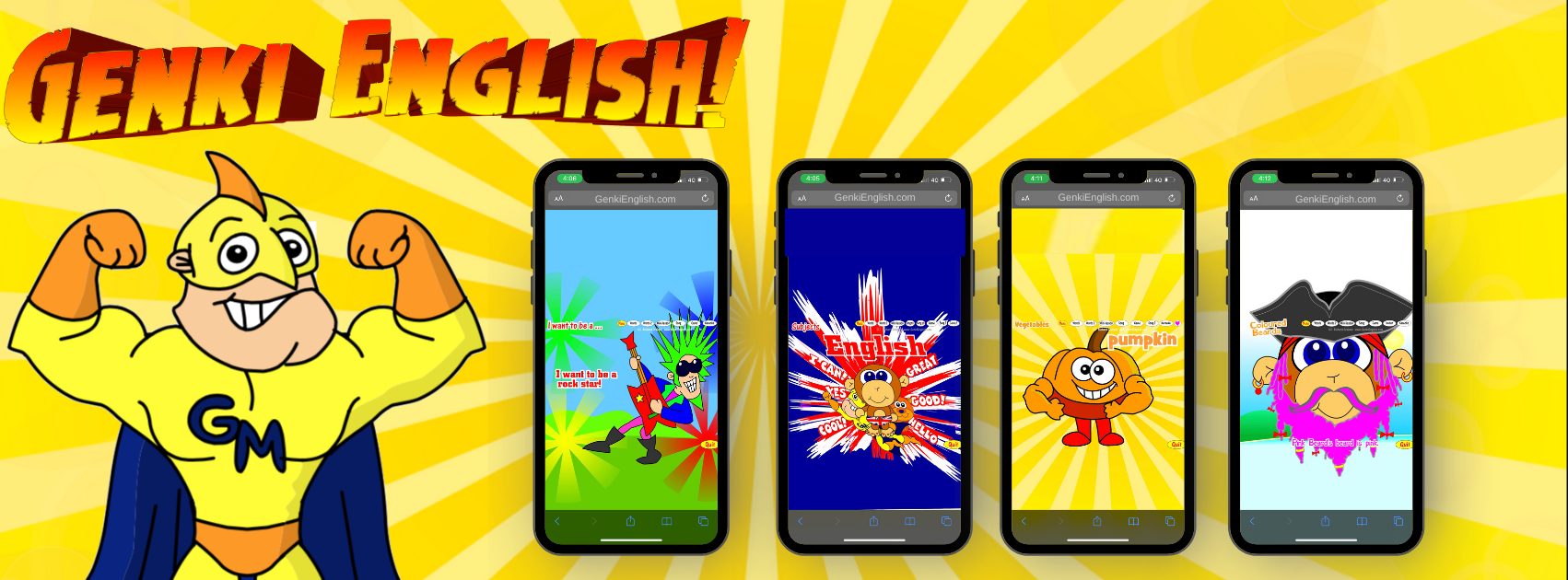Part one is here:
Then after a break it was showing how we teach these exact same “success secrets” to kids using Genki English. Until now they’d been picking up things like Left & Right and How are you? but not understanding the underlying confidence parts of the programme. So I started off with the Superhero song, as it’s the easiest song to illustrate things!
We started off with the Superhero pose. Of course many of them were still half hearted, and in their presentations many of them were slouched. This is a great time to introduce body language, where only:
![]() 7% of communication is what you say,
7% of communication is what you say,
![]() 30% is how you say it and over
30% is how you say it and over
![]() 50% is what you look like saying it.
50% is what you look like saying it.
How to feel genki whenever you like!
I really love the “think genki be genki” skit here. You get everyone to stand up straight, to look up a touch and smile with your feet apart and your arms by your side. Naturally this makes you feel good. Try it and see!
Then I tell them to, without moving their bodies at all, make themselves feel sad. Try it yourself, it’s impossible!
Our emotions create our posture and our posture creates our emotions.
Then I ask them to drop their shoulders, to bring their feet together, to lower their head and lower their eyes. Naturally you feel depressed. However hard you try it’s impossible to be Genki without moving your body.
So then you just go back to previous pose and you instantly become happy. It’s such an amazing, liberating feeling to realise that you can change your mood just by changing your body, and the students looked really impressed with it!
Anyway, for the superhero you have to go even further and really do a super superhero pose. I had a few new skits here which worked great especially the “fireman” one!
Presentation Skills
Then I did the Superhero drawing game to try and teach some presentation skills.
The first being not to look over the heads of the students!
They were teaching how they thought it should happen, not how it really should happen. Keeping eye contact with the audience is one of the main things. Again it’s traditional Japanese to keep eye contact with your opponent at all times! Shrugging shoulders and slouchy posture were banned. I chose the people at random, so got a teacher at one point. You could tell the difference straight away, but she went the other way with a loooonnnggg list of of stuff! “If I had more time, I would have written less” said Mark Twain.
Then it was the usual psychological stuff behind the lesson e.g. how “I can fly” is true, confidence points etc. Then how we build on the language to do Can you speak? which then led into talks about international understanding and North Korea. All stuff that is natural in the international community I deal with everyday, but of course not if you’ve only ever lived in one country!
Visualise it!
Then I finished off with the future lifestyle visualisation like last week. With university students it’s not wholly a problem of communication, it’s that they often don’t know what to communicate. And it’s fine saying they can do anything in their lives, but they often don’t know what they want to do! So this is the best activity I have for the “lifestyle” aspect of this. Again the students had never experienced anything like this and half of them looked like they were going to burst into tears at the end!
It’s not often I get moved by audiences these days, but seeing these “kids”, well 20 years old is a kid to me, open their eyes to what they really can do and the reactions and comments afterwards made me really think again about Japan. This type of lesson is maybe where I could be making a bigger difference, it was so amazing to see their reaction.
So I need to try again, polish up my materials and see if other universities want to invite me! Do you know any?




I’m really happy you’re feeling this way as I think (sorry if I’m putting it wrong) Japan is the root for GENKI ENGLISH.
So I think you have to care for this , and maybe GENKI ENGLISH is going to be the root for Japan.
I don’t have lots of University connections, but I’ll try; what would you call your workshop? (In English and Japanese!)
Hi Richard,
Very interesting class! Would you explain more about the lifestyle visualization. I think I may have missed that lesson….
@Margit: Probably 自己開発&コミュニケーション or something like that. (Jikokaihatsu is personal development)
@Gumby: I’ve got a video I’ll put up when I get time with the full explanation!
Thank you for always sharing your new invented original GE methods in teaching english, It’s amazing how you came-up with the alloted percentage. I second the motion, Emotion is the key secret to success in studying/ learning english. Students cant’t learn english fast if they are tired, depressed and bored.